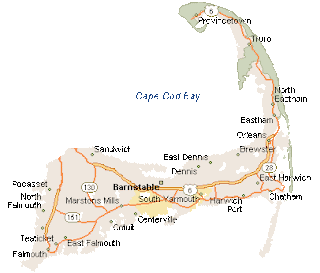Dermo is one of the two major diseases that affect the Eastern Oyster- Crassostrea Virginica. It along with MSX have been plagues to the population. This article on Dermo and how it is more active in oysters who have less oxygen is taken from the Shorelines Blog that is maintained by the Smithsonian Environmental Research Center. We find it noteworthy in that one of the conclusions and implications for oyster restoration is that high concentrated populations of oysters may be better able to withstand this pressure as they reduce the concentration of phytoplankton driving the phenomemon. The original article was posted by Kristen Minogue in September 2012. We have excerpted the photos and text from there.
 |
| Oyster infected with dermo. |
Breitburg and
her lab have spent the last three years examining Eastern
oysters infected with Dermo,
a slow but deadly disease whose impact in the Chesapeake Bay
accelerated in the 1980s. Dermo is caused by a microscopic
parasite called Perkinsus marinus that
is acquired as oysters feed. Once inside, it multiplies
until hundreds of thousands of parasites take over the
oyster’s body. Even moderately infected oysters suffer
slower growth and a diminished ability to reproduce.
Some of the biggest danger zones for oysters with Dermo are
the ones suffering from low oxygen. Without enough
oxygen, oysters’ capacity to fight infection drops. The
problem with shallow water in some parts of the Bay—and
many estuaries around the world—is that their oxygen
levels swing drastically. Oxygen concentrations tend to
soar during the day only to plummet to hypoxic conditions at night. This
phenomenon, known as diel-cycling hypoxia,
is common in shallow waters where nutrients are high and
winds and currents too low to mix the water well.
 |
| Technician Rebecca Burrell dissecting the oysters. |
“We don’t tend to find oysters in areas
that are continuously low in oxygen,” Denise Breitburg says. “But we
do find them in areas that have these big day-night
swings. So it’s very likely that this form of low
oxygen is really problematic.” says Breitburg.
Nutrients streaming off the land fuel
the wildest fluctuations. While the sun is shining,
massive algal blooms swollen by excess nutrients
photosynthesize and flood the water with oxygen. But at
night, when photosynthesis stops, plants, microbes, and
animals continue to respire, depleting the oxygen in the
water and releasing CO2—just as humans do
when they breathe. Ideal summer oxygen concentrations
in the Bay hover around 7 mg/L. At night some places
drop to near zero.
Breitburg’s team is working to
discover exactly how these fluctuations impact the
disease and the benefits oysters give the Bay. Field
experiments they conducted already showed that oysters
in areas with low nighttime oxygen had a higher risk
of Dermo infection. Now
they are testing it in lab.
 |
| Dissolved Oyygen Oyster Mortality Tank |
In a laboratory ominously named the “Room of DOOM”
(Dissolved Oxygen Oyster Mortality), they are
manipulating oxygen and pH (acidity) levels in 30
oyster aquaria. Each tank contains young, uninfected
1-year-old oysters. Another tank contains
Dermo-infected 4-year-old oysters.
The lab pumps water from the infected tank into the
healthy tanks to see how many healthy oysters will
contract the disease. Meanwhile five gas cylinders
(normal air, air without carbon dioxide, oxygen,
carbon dioxide, and nitrogen) enable them to recreate
the cycles Bay oysters experience in nature.
At first the team looked only at
oxygen and saw that Oysters exposed
to low oxygen, even for only a few hours each night,
had much higher infection rates than ones that enjoyed
constant, healthy levels. They also filtered less
water, hampering their ability to help purify the Bay
of excess algae.
This summer the lab is investigating
a second piece of the puzzle: acidity. More acidic
water also can reduce oysters’ ability to produce
disease-fighting chemicals. Like oxygen, it operates
on a day-night cycle. CO2 from nighttime
respiration can raise the acidity of shallow water
tenfold.
Actually helping oysters recover will
take a three-part strategy, according to Breitburg.
First, protect oysters from fishing. Second, reduce
nutrient runoff into the Bay, since it exacerbates the
oxygen and acid cycles. Finally, restore large
quantities of oysters in shallow areas, where the
oysters themselves could clear the water enough to
help fix the problem.
“During periods of low oxygen,
oysters are filtering less, so they can’t provide
ecosystem services important to the Bay’s health,” she
says. “But restoring oyster populations could improve
water quality in shallow Bay waters.”
Research being conducted in a propagation zone in Wellfleet Massachusetts is actually demonstrating those water quality improvements in a real life situation. We hope to be adding a post with more details on that in the very near future.
 |
| Map of Wellfleet Massachusetts |
Research being conducted in a propagation zone in Wellfleet Massachusetts is actually demonstrating those water quality improvements in a real life situation. We hope to be adding a post with more details on that in the very near future.


No comments:
Post a Comment